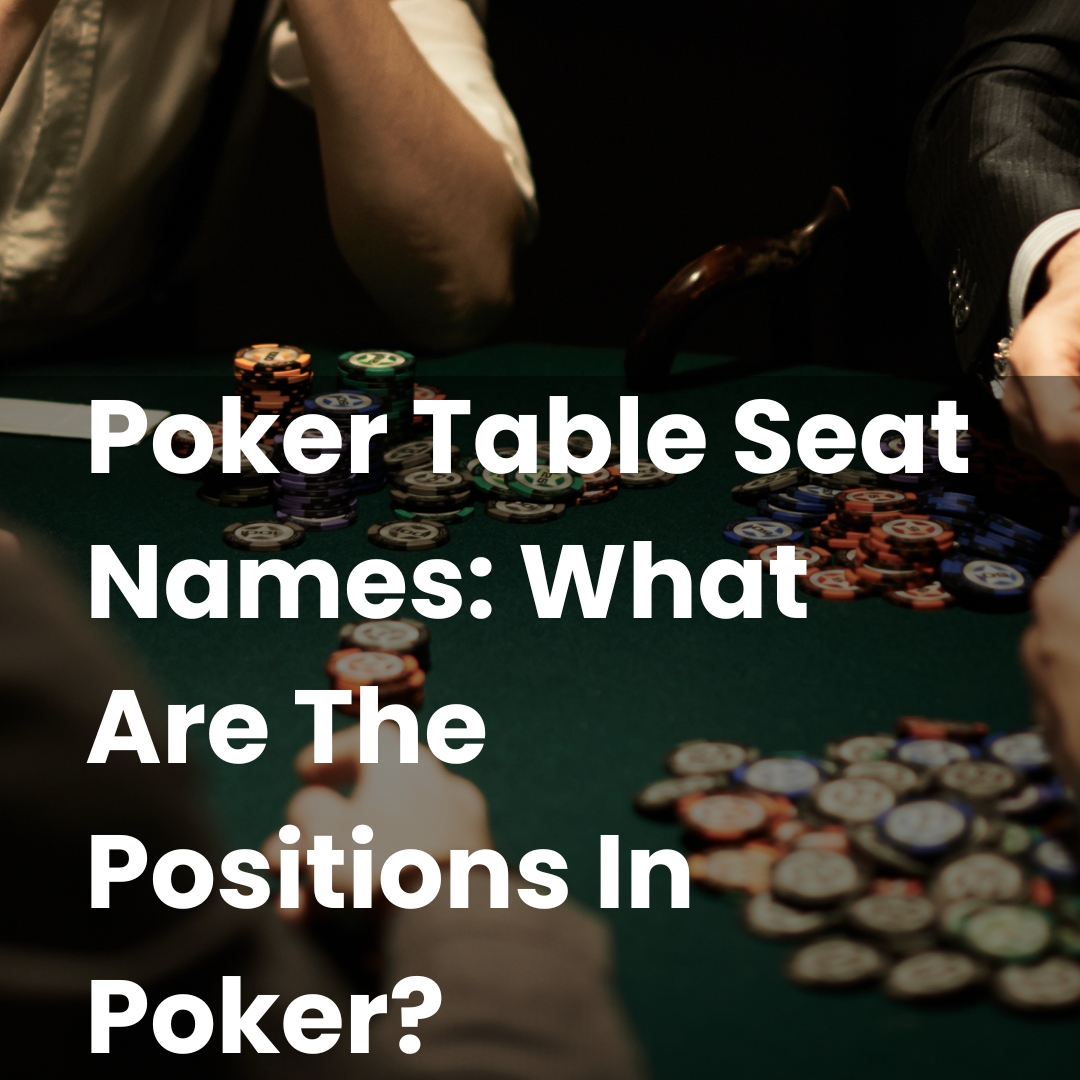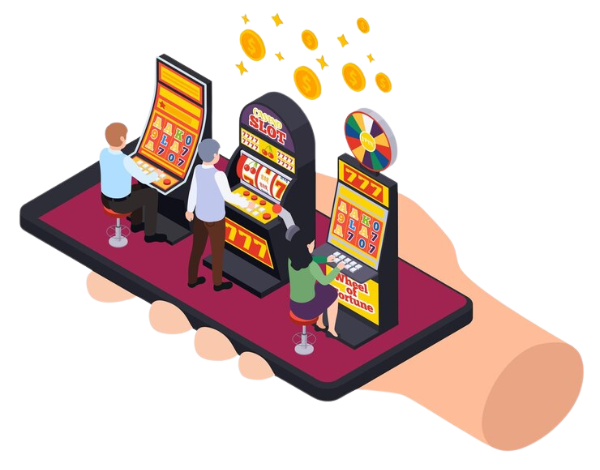Have you ever wondered why some poker players seem to have an edge at the table?
One secret lies in understanding the different seat positions in poker. Each seat around the poker table has a unique name and role that can influence your game strategy.
Knowing where you’re seated can affect your decisions during the game.In this post, we’ll introduce you to the seat names and positions in poker, from early to late positions, and help you familiarise yourself with the poker table layout.
Read on if you’re ready to learn more about how these positions work.
Poker Table Seat Position Names
Understanding poker table seat positions could be advantageous to your gameplay. Each position has a specific name and involves different strategies.
The Button (Dealer Position): This is the last position to act in a betting round, potentially giving you a decisive advantage. The Button moves clockwise after each hand.
Small Blind: Sitting immediately to the left of the Button, this is the first position to act after the flop. You start by placing a small mandatory bet.
Big Blind: Directly to the left of the small blind, you place a bigger mandatory bet. This position also acts early in the betting rounds, except pre-flop.
Under the Gun (UTG): The first player to act in the poker round, seated next to the big blind. Decisions here can be challenging due to the early position.
Middle Position (MP): These are the seats that follow the UTG players. You have more information from earlier players, but still lack the possible benefits of later positions.
Late Position: This includes the ‘Cut-off’ (just before the Button) and the Button itself. These are ideal seats as you can observe more opponents’ moves before deciding.
Each seat offers different potential strengths and challenges. Understanding them can help make your poker experience both entertaining and strategic!
Button (Dealer)
The Button, also known as the dealer position, is one of the most coveted seats in poker. This position is marked by a small disc, known as the Button, which rotates clockwise around the table after each hand.
Being on the Button gives you a slight advantage because you are the last to act in three out of the four betting rounds. This means you get to see how all the other players choose to play their hands before you decide what to do.
This position allows you to make informed decisions based on the actions of other players. You can choose to be more aggressive with your bets, or take a cautious approach, depending on the flow of the game.
Small Blind
The small blind is the position immediately to the left of the dealer button. If you’re sitting here, you’re required to make a small mandatory bet before any cards are dealt. This is usually half of the big blind, but it varies depending on the game.
Being in the small blind can be tricky. You’ll be one of the first players to act after the flop, turn, and river, which means you won’t have as much information as players acting later.
However, starting with a partial bet can also be seen as a small advantage, as you’re already part of the betting action.
Because of these mixed aspects, being in the small blind requires careful planning and strategic thinking. Adjusting your play according to your hand and the actions of other players is important in this position.
Big Blind
The big blind position is seated directly to the left of the small blind. As part of the game’s structure, you’ll start the round by posting a larger mandatory bet, which is usually double the small blind.
This position can be challenging because you’re required to bet without seeing your cards first. You’ll also be one of the first players to act in most betting rounds, which might limit your ability to make informed decisions.
However, since the bet is already made, you’re involved in the pot right from the start, possibly giving you an incentive to stay in the game with a decent hand.
Being in the big blind teaches players the importance of being strategic and knowing when to hold or fold. Observing the actions and behaviours of other players is crucial to making the most out of this position.
Under the Gun
The term “Under the Gun” refers to the first player to act in a poker round. This position is located immediately to the left of the big blind.
Playing from the UTG position can be challenging because you must make your decision before most other players. This lack of information means it’s important to proceed with caution.
Usually, players in this position tend to play stronger hands. This conservative approach can potentially help minimise risks, as plenty of players will act after you.
To succeed from the UTG position, paying close attention to how the other players at the table are behaving can be key. This way, you’ll be more prepared for their reactions once the action comes back around.
Early Position
The early position in poker refers to the seats directly after the big blind. This typically includes the Under the Gun (UTG) and a couple of seats to the left of it, like UTG+1 and UTG+2.
Playing from an early position can be tricky. You’re one of the first players to act, and you have limited information about the other players’ intentions. This makes it a challenging position to be in.
Because of this, players in early positions often choose their starting hands carefully. It’s usually wise to play stronger hands here, as there’s a higher risk of being outplayed by the many players acting after you.
Despite its challenges, mastering the early position can add depth to your poker strategy.
Middle Position
The middle position in poker is located between the early and late positions at the table. Typically, this includes three seats, usually right after the early position players.
Being in the middle position means you get to see the actions of those in early positions before making your decision. This may give you some helpful insights, though not as much as sitting in a late position.
Players often find the middle position a bit more flexible.
While you have some information on how others are playing, you’ll still need to be cautious. Players in late positions can still influence the round heavily.
Overall, the middle position offers a balance between potential risk and opportunity, making it an important part of your poker strategy.
Late Position
Late position in poker refers to the seats near the end of the betting order. This generally includes two key positions: the Cut-off and the Button.
Being in a late position offers a distinct advantage. You get to see how most of the other players at the table choose to act before making your decision. This extra information can be invaluable.
The Cut-off position is directly to the right of the Button. It’s a strong position that allows for strategic plays because only one player acts after you.
The Button is the strongest position at the table, giving you the most information before you decide what to do.
Sitting in a late position allows for a flexible range of starting hands and often gives you the ability to control the flow of the game. This makes it a crucial part of poker strategy.
Cut-off
The cut-off position in poker is located directly to the right of the Button. It’s considered one of the most advantageous positions at the table, just behind the Button itself.
Being in the cut-off allows you to see how most players have acted before it’s your turn.
Players in the cut-off often have good opportunities to play a wider range of hands. With fewer players acting after you, it’s sometimes possible to steal blinds or take control of the game if the button folds.
Using the cut-off position wisely is a key part of a strong poker strategy.
Hijack
The hijack position is located just to the right of the cut-off seat on a poker table. It’s considered a late-middle position, offering some strategic advantages compared to earlier seats.
From the hijack, you have the opportunity to observe the actions of many players before deciding how to proceed. This can help in forming a clearer understanding of the table dynamics.
The hijack position is known for being a spot where players might attempt to “steal” blinds by placing bets that might deter others from staying in the hand.
When sitting in the hijack, you can be more flexible with your hand range. This position supports both aggressive and cautious play, depending on how the game unfolds.
Overall, the hijack offers a solid balance of potential risk and opportunity, making it a key position.
Lojak
The Lojak position in poker is another term for one of the middle positions at the table. It typically sits just before the hijack seat, two spots to the right of the cut-off.
This spot offers a balance between the limited information available to early positions and the strategic advantage of late positions. You can see how several players act before you, providing insights for your own decision-making.
Being in the Lojak position allows you to play a slightly wider range of hands, compared to early positions. However, you should still remain cautious since many players act after you.
Does It Matter Where You Sit At a Poker Table?
Yes, where you sit at a poker table does matter, often more than you might think. Different positions may offer varying levels of strategic advantage.
Sitting in a late position, like the Button or the cut-off, lets you act after most players. This provides valuable information and allows for more flexible decision-making.
Early positions, such as Under the Gun, require you to act with limited information. Here, choosing stronger hands is often key to maintaining an advantage over the round.
Middle positions offer a balance, allowing you to gather some insights while playing a wider range of hands compared to early positions.
However, as poker involves an element of chance, any winnings can never be guaranteed.
What Is The Best Seat In Poker?
In poker, the best seat is usually considered to be the “Button” or dealer position. This seat gives you the advantage of acting last in the majority of betting rounds. You can watch how all other players choose to act before you make your own decision, allowing for more informed and strategic plays.
Being on the Button not only provides valuable insights, but also offers flexibility. You can decide whether to be aggressive or cautious, based on the flow of the game and the actions of your opponents.
While the Button is generally seen as the most advantageous seat, it’s important to recognise that poker is a dynamic game. The best seat can depend on many factors, such as the style of play of your opponents, or your personal strategy.
Ultimately, understanding each seat’s potential strengths and challenges can help you make more informed decisions.
Play Online Poker Games
Finding the right online casino to play at is an important step; it ensures you have the opportunity to have a safe and entertaining experience.
At our site, we have a page dedicated to showcasing some of the top online casino sites. This list can help you choose a reputable place to start playing poker online.
Whether you’re looking to play for the entertaining gameplay, or to develop your skills, exploring these recommended sites can help you find a fit for your poker preferences!




